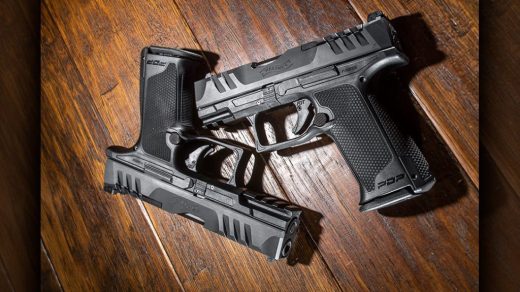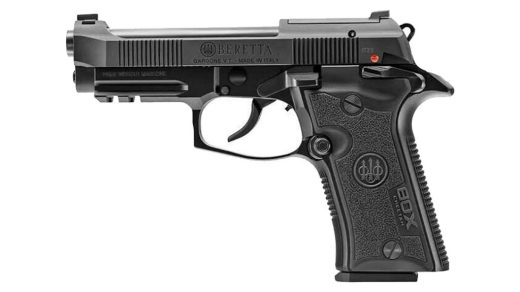Don’t just throw your gun into your carry-on bag and hope for the best.
Between long waits at the airport, strict security regulations, and inevitable delays, flying can be a pain even for the average traveler.

It may seem like adding a gun to the mix would only make things more complicated, but traveling legally with a firearm can actually be pretty simple — if you know what you’re doing.
Today we’ll show you how to pack your gun, ammunition, and accessories to keep them safe. And walk you through waht you need to do at the airport to make flying with your gun easier.

If you use this guide and a bit of common sense, traveling with your firearm will be just as painless — well, only equally as painful — as flying without it.
Table of Contents
Loading…
Keep Your Gun Safe and Legal–The TSA Way
First things first, you need to know the TSA’s rules for firearms.
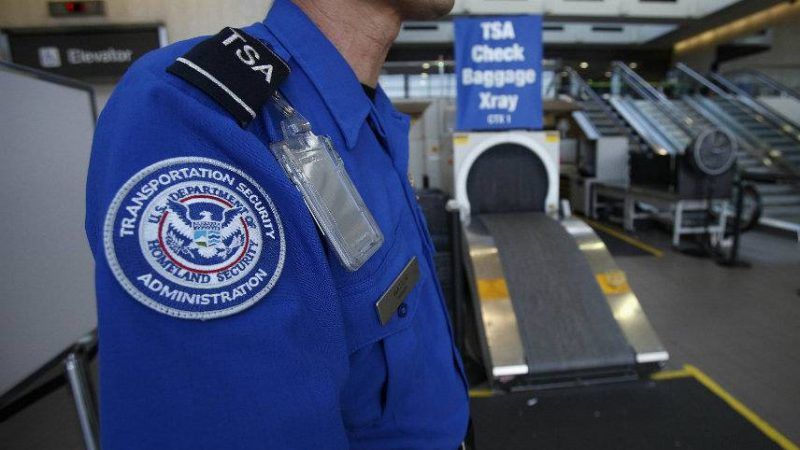
In a world where pocket knives, snow globes, and even gel insoles can’t be stored in carry-on bags, it should come as no surprise that you can’t take a gun in your carry-on.
Here’s a quick (-ish…) rundown of the TSA rules:
- Declare any firearms you present for transport as checked baggage.
- Firearms must be unloaded and locked in a hard-sided container and transported only as checked baggage. Only the passenger should retain the key or combination to the lock. Do not use a TSA lock (more on that later).
- Parts like magazines, bolts and firing pins are prohibited in carry-on baggage but may be transported in checked baggage. I routinely toss those loose in checked baggage to cut weight on my rifle cases.
- Ammunition is prohibited in carry-on baggage but may be transported in checked baggage.
- Ammunition being transported may not exceed 11 pounds and must be in its original packaging or stored securely in a container made for that purpose.
- Replica firearms including those that are toys may not be flown in carry-on baggage.
- Rifle scopes are allowed in carry-ons and checked luggage by TSA.
Don’t forget…every airline has its own regulations, on top of what TSA requires. So do a little research to make sure you’re checking every box you need to in order to fly with your guns.
Bear in mind that you shouldn’t use a regular TSA-approved lock used for regular luggage.
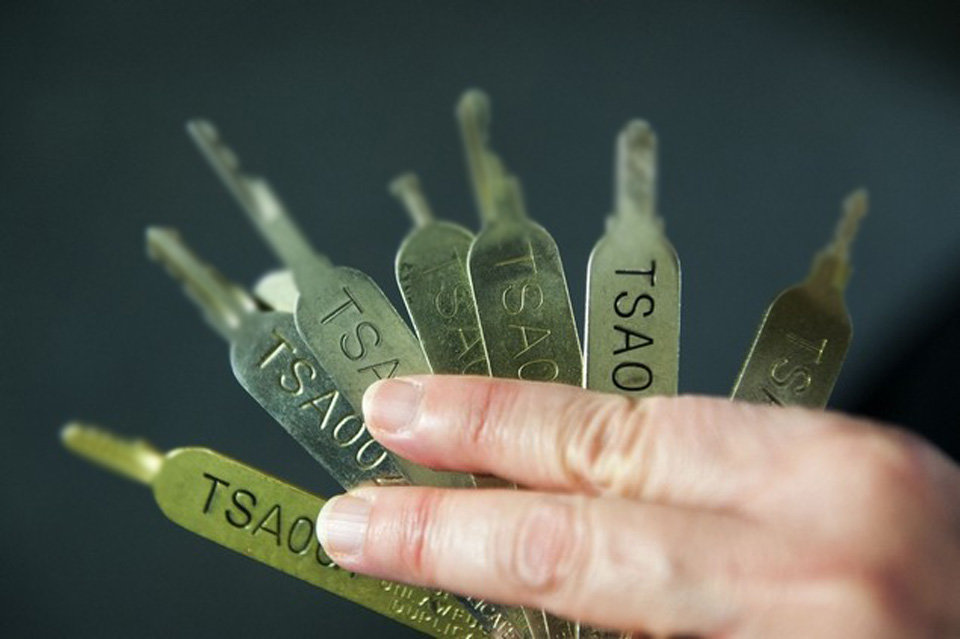
Master Lock makes a variety of inexpensive but heavy-duty lock options that you can use on your case.
But for a full rundown on locking your guns up, check out our guide to the 5 Best Gun Case Locks for Traveling with Firearms.
Master Lock Keyed Padlock
Prices accurate at time of writing
Prices accurate at time of writing
- 25% off all OAKLEY products – OAKLEY25
Copied! Visit Merchant
Keep the key on your person, with no copies in your checked luggage. Otherwise, what’s the point of the lock?
Based on years of flying experience, we recommend you use solid key locks with a shank clearance just tall enough to fit the gun case without allowing extra movement once closed.
Locks are an enormously misunderstood and misinterpreted part of flying with firearms. It is true TSA now lists allowing a TSA lock on their website but that does not make it smart.
Do you really think it’s a good idea to secure a gun case with a lock quite literally anyone can pop open in a fraction of a second?

You don’t want to skimp on your protective case for both your peace of mind and for the TSA’s. After all, your case is the primary protector of your gun while your bag is being tossed around by less-than-careful baggage handlers and sliding around the hold of the plane.
In addition to being sturdy and durable, many gun owners also like to travel with their firearms in cases that don’t obviously like gun cases in order to prevent theft.
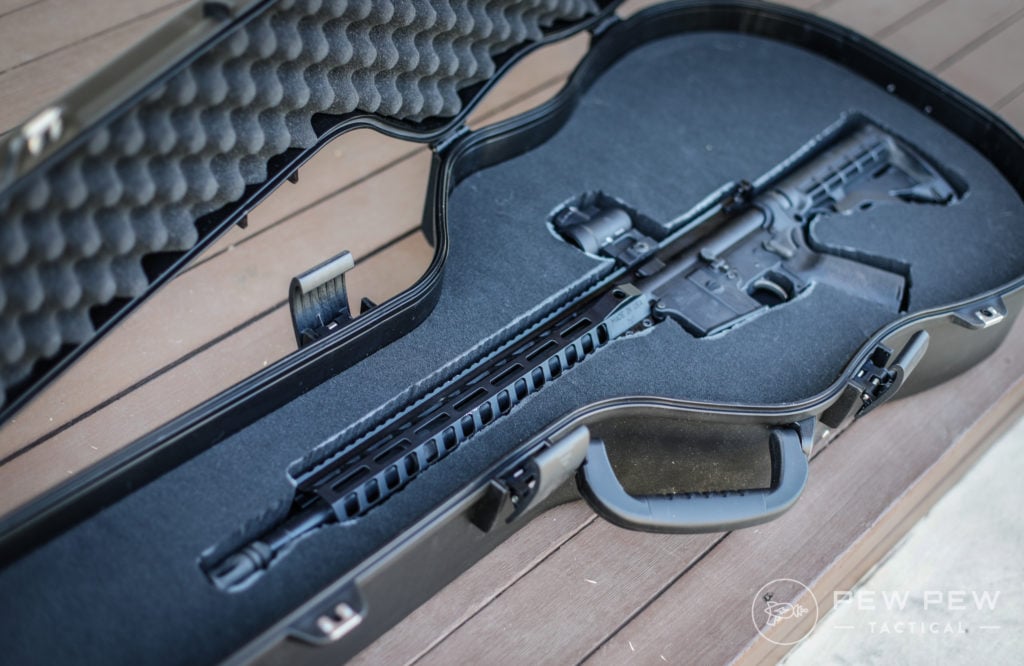
If that’s your jam, try a case that looks like it could just as easily be carrying sports equipment, a musical instrument, or small electronics.
For example, a rifle or shotgun could be carried in a hard case intended for golf clubs like this one from Samsonite.
Samsonite Hard Side Case
Prices accurate at time of writing
Prices accurate at time of writing
- 25% off all OAKLEY products – OAKLEY25
Copied! Visit Merchant
Just be sure to cut foam inserts to keep everything protected and in place during transport.
Pelican is the gold standard of airline-friendly gun cases, and for good reason. There is no such thing as an indestructible gun case but theirs come close.
I’ve used them for years and have a collection of differently-sized Pelican cases for handguns, rifles, and multiple guns.
The 1720 Protector Long Case is a favorite of mine, so much so I have several. It has an automatic purge valve, stainless steel bearings, and is watertight, crushproof, and dustproof. I also have the 1150 Protector Case for handguns.
Pelican 1700
Prices accurate at time of writing
- Pelican (See Price)
- Brownells (See Price)
- Amazon (See Price)
Prices accurate at time of writing
- 25% off all OAKLEY products – OAKLEY25
Copied! Visit Merchant
Are they pricey? Yes. Are they worth it? Definitely
If Pelican is too rich for your blood, check out our gun case recommendations for more great cases at every price point.
How to Pack for an Easy Flight
Nobody likes packing, but it’s an unfortunate reality of air travel.
Packing your guns right the first time can mean the difference between breezing through security and missing your flight.
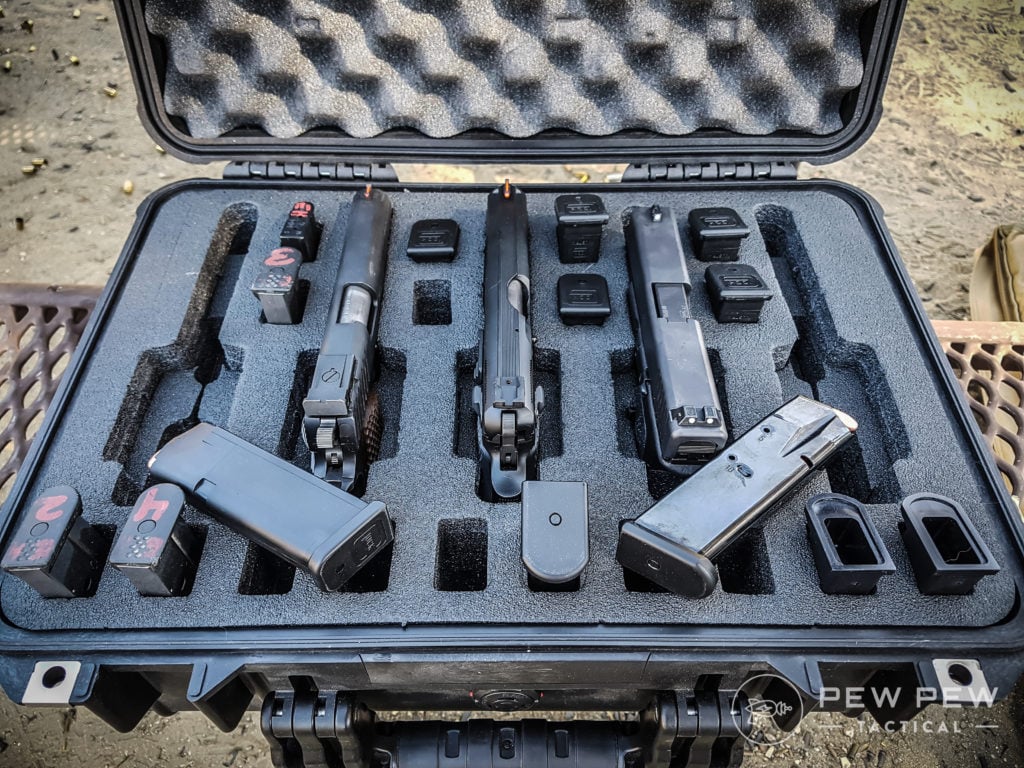
The more squared-away your gear is the less trouble you tend to have when declaring the firearms.
In those cases where I am only flying with a gun or two, I like to zip it all neatly in a soft rifle case inside the hard case. If I’m flying with more than I can pack that way, I make sure to carefully Tetris together my guns so that they don’t get dinged up and can easily be seen.
Buy a handheld luggage scale to check your luggage weight at home. They’re cheap, handy, and nice to have around for weighing anything else you might not be able to fit on a scale.
Luggage Scale
Prices accurate at time of writing
Prices accurate at time of writing
- 25% off all OAKLEY products – OAKLEY25
Copied! Visit Merchant
Ammunition also has to be checked and must be stored in containers specifically designed for carrying small amounts of ammunition.
Shotgun shells and ammunition .75 caliber or less can be stored in the same hard case as a firearm (still in the container specifically for ammunition), but don’t have to be.

Loaded or empty magazines and clips have to be stored the same way as guns, but firearm parts like bolts and firing pins just have to be stored in checked bags.
Even though the TSA says boxes made out of flimsier materials like cardboard are alright for storing ammunition during air travel, you may want to go with a more solid container.
This will help you avoid the risk of having your ammo box fall apart mid-flight, leaving your ammunition to scatter across your bag.
MTM 25 Round Shotgun Shell Box
Prices accurate at time of writing
Prices accurate at time of writing
- 25% off all OAKLEY products – OAKLEY25
Copied! Visit Merchant
Lightweight but sturdy options are going to be the best bet for most travelers.
Breeze Through Declaring Your Firearm
When checking your baggage, you also have to declare any guns or ammunition to the airline.
You have to do this every time you travel, so don’t forget to declare your firearms and ammunition again if you switch airlines during the same trip.
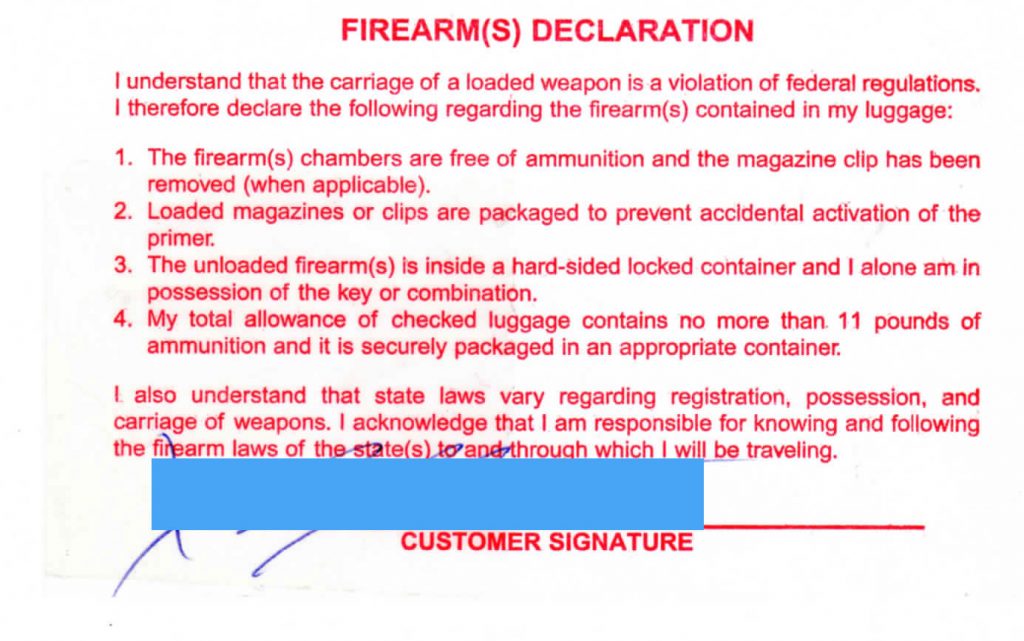
What exactly does it mean to declare your gun, though?
Declaring a firearm is not a big deal and it won’t get you funny looks or suspicious treatment.
After all, lots of people fly with firearms, and your gun probably won’t even be the weirdest thing the agent will have encountered since starting their shift.
Just go to the ticketing desk inside the airport (you can’t declare a gun curbside) and tell the agent that you need to declare a firearm.
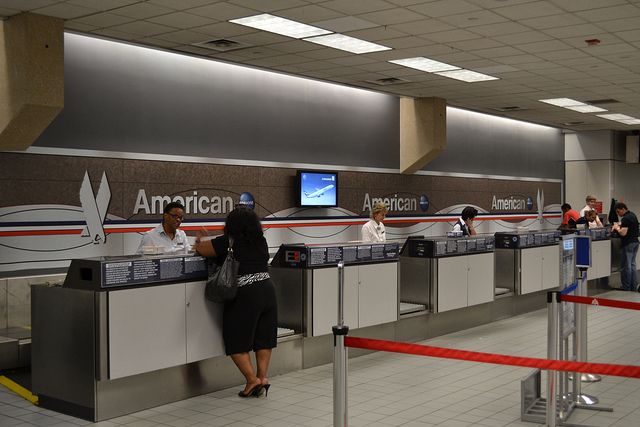
They’ll give you a card to fill out with your contact info, verifying that you’ve properly stored your gun. The agent will then check that the case is locked.
By law, you must place the card inside your case after signing it. More importantly, if an agent attempts to label the outside of the case in such a way that clearly marks it as containing a firearm, inform them Federal law prohibits this: 18 USC Sec. 922(e),
“No common or contract carrier shall require or cause any label, tag, or other written notice to be placed on the outside of any package, luggage, or other container that such package, luggage, or other container contains a firearm.”
After a few questions to make sure any accessories or ammunition are stored properly, you’re usually good to go, but the agent may also want to look inside the case.

In those cases you open the case and show them, respecting the four golden rules of gun safety. Under no circumstances should the counter agent handle your guns.
Chamber flags or gun locks running through the chamber of your firearms are helpful visual indicators and can speed up the process.
Universal Chamber Flag
Prices accurate at time of writing
Prices accurate at time of writing
- 25% off all OAKLEY products – OAKLEY25
Copied! Visit Merchant
Lock your gun case before it goes to be checked by TSA. Do not send over an unlocked or otherwise accessible case. Also, stick around…if TSA needs the case to be unlocked, you’re going to have to be the one to do it.
You should unlock the combination locks yourself. TSA and airline staff are not supposed to ask for your combination or a copy of your key.

If an agent demands the keys, refer him or her to the Code of Federal Regulations regarding traveling with firearms:
- Title 49: Transportation, Part 1540 – Civil Aviation Security: General Rules, Subpart B – Responsibilities of Passengers and Other Individuals and Persons, 1540.111 (c) (iv) – The container in which it is carried is locked, and only the passenger retains the key or combination.
- Title 49: Transportation, Part 1544 – Aircraft Operator Security: Air Carriers and Commercial Operators, Subpart C – Operations, 1544.203 (f) (iii) The container in which it is carried is locked, and only the individual checking the baggage retains the key or combination.
(You may even want to print off relevant codes, policies, and other documentation that is posted by TSA, the federal government, or your airline regarding flying with guns. Better safe than sorry!)
Your agent can open the lock with a key if they give the key right back to you. Remember, you should have a key on your person, but not in your checked bag.
TSA and airline agents also shouldn’t handle your firearms. If they feel it needs an inspection, they are supposed to call over a law enforcement officer.
At the majority of airports, you can stand in a spot that provides you with a visual view of the space where TSA checks special baggage. When the TSA agent is finished checking the locks and scanning and swabbing the case, he or she will signal you are good to go.
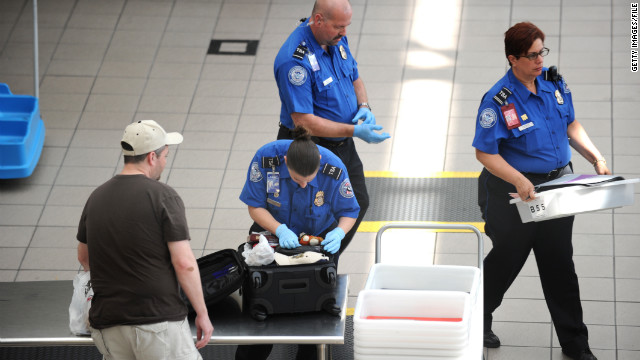
After you’ve finished declaring your firearm, stick around the desk for 20 or so minutes in case they need to call you back for another inspection. If you go through security and they need to call you back, you’ll have to go through it all over again.
Once you do leave the area and go through security, pay close attention to announcements and pages in case you are required to return to the TSA luggage checkpoint.
Declaring is usually a quick and easy process, but you want to allow yourself at least an extra hour in case of one of the rare occasions where it does take longer.
It’s much better to have more time to browse duty-free stores or grab a Cinnabon than to miss your flight.

Note: Air rifles and air guns are not considered firearms, but must be stored in checked bags. They do not require declaration, but air tanks must be inspected.
Other People’s Rules
The TSA isn’t the only person who makes rules about flying with your firearm, and you need to know which ones will affect you.
Most airlines have rules for flying with guns on top of the TSA’s. These rules vary from airline to airline. So check your airline of choice’s rules.
These rules and regulations generally are found easily by searching your airline’s name and “firearm” or “gun” or by looking on their website under the section for baggage.
We’ll give you a head start in finding the rules for the most popular airlines by linking you to their pages here:
- American Airlines
- Alaska Airlines
- Allegiant Air
- Canada Air
- Delta Airlines
- Frontier Airlines
- JetBlue Airways
- Southwest Airlines
- Spirit Airlines
- United Airlines
You’ll also need to know the laws for wherever you’re flying to. Airport staff only checks to make sure you’re following the airline and the TSA’s rules. So even if your gun is checked legally, you may be in violation of local laws once you reach your destination.
For international travel, booking direct flights as much as possible minimizes the countries you pass through. Not to mention, it cuts down on the number of customs requirements that you have to deal with. This makes the whole process easier.
You’ll need the have the customs rules of all countries you’ll be visiting. You’ll also need a US Customs Form 4457, which must be signed in person by a US customs official before you leave.
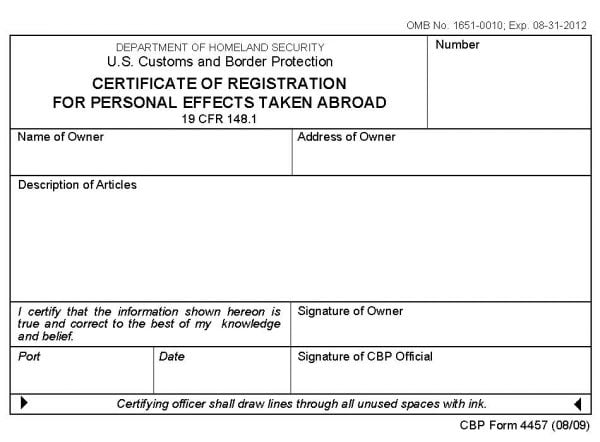
This form allows you to bring your firearms back into the country without having to pay duty on them. And this is especially important for foreign-made guns. It can cover other foreign-made items as well and can be used multiple times — so hold on to it for future trips.
You’ll want to get all this information together early so you have plenty of time to get it filled out properly before you leave, especially if you need a visa.
Rules are subject to change. As a general rule, double-check regulations prior to flights. Never assume.
Picking Up Your Gun From Baggage Claim
Once you land, large gun cases checked as an individual piece of luggage rather than stored in checked baggage may have to be picked up with large or unusual items, like skis, instead of with other checked baggage.
Usually, they’ll just come down the carousel with everything else, though.
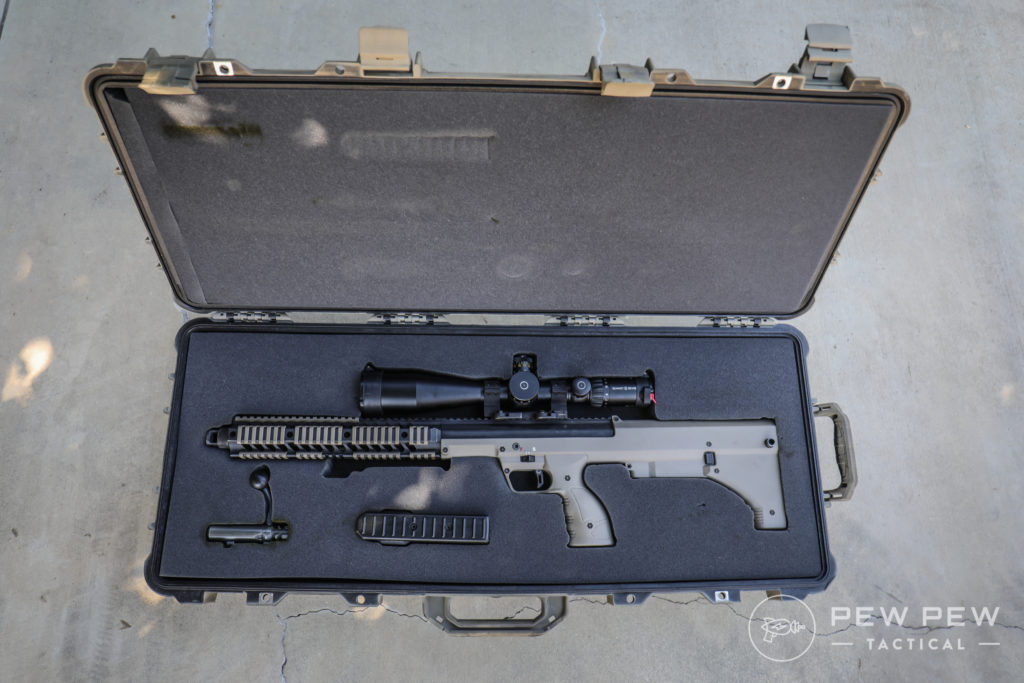
Why there’s no consistency in this, we’ll never know. But if your suitcase has come down the carousel and your guns haven’t, you may want to pop by the baggage office to see if they have it with the other weird items.
Take a moment to check your case before leaving the airport to ensure it is still secure and nothing is missing.
If it’s been zip-tied it’s handy to have a pocket knife stashed in an easily-accessible pocket on your checked baggage so you can remove the zip tie.
Swiss Army Knife – Climber
Prices accurate at time of writing
Prices accurate at time of writing
- 25% off all OAKLEY products – OAKLEY25
Copied! Visit Merchant
Final Thoughts
So, to sum everything up:
- Guns and ammunition both need to be in checked baggage
- Store your gun unloaded in a hard case with a non-TSA approved lock
- Using a solid container to store your ammunition is safer and easier
- Be sure to declare your firearm
- Know your airline’s rules
- Know the laws of wherever you’re going
That’s about it. Using this guide, you should be able to fly with your gun with relative ease, but when in doubt, contact your airline or the TSA directly.
For international travel, refer questions to the local consulate or embassy of the country or countries you’re visiting.
Want more tips? Check out the Brownells Daily Defense video below.
Have you ever flown with your gun? Have any tips or tricks? Let us know in the comments below! Sometimes it’s easier to mail your ammo or guns to your final destination, take a look at How To Mail Guns (Legally)
The post Flying with Firearms: Everything You Need to Know appeared first on Pew Pew Tactical.
